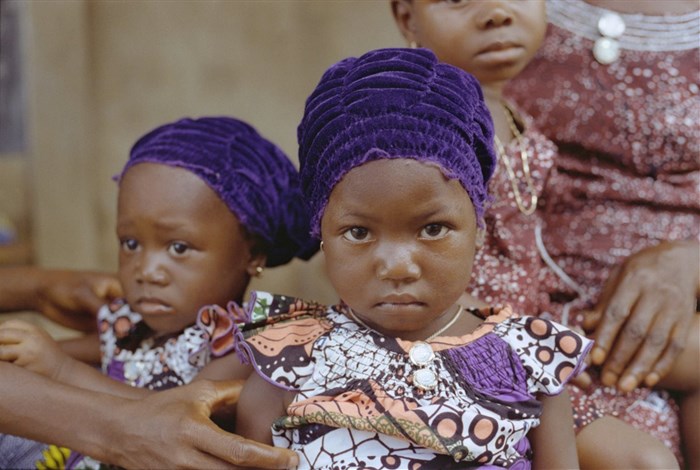We are a team of researchers who investigate the links between climate change, food systems and conflict. We set out to explore the relationship between climate variability, child malnutrition and violent conflict.
Our study focused on Nigeria. The country has faced rising temperatures, recurrent droughts, and one of the highest burdens of food insecurity and conflict in Africa. Its northern and north-eastern regions in particular have fragile agrifood systems, limited public services, and ongoing insecurity. This makes them especially vulnerable to the impacts of climate shocks.
In north-eastern Nigeria, 8.8 million people are threatened by a nutrition crisis. About 12,000 children in the Lake Chad area suffer from acute malnutrition as a result of resource depletion, climate change and insecurity.
For our research, we used household data from the Nigeria demographic and health surveys and combined this with information on climate and conflict. We applied a system of equations to separate the role child malnutrition plays in climate-related conflict from other factors that aren’t easily observed but which contribute to shape the climate-conflict link.
From this, we found that rising temperatures don’t immediately trigger violence. Instead, they set off a chain reaction: heat stress on the planet over time stresses food systems. As crops fail and household incomes fall, the youngest and most vulnerable are often the first to show signs of distress and become malnourished.
Climate change contributes to higher rates of acute child malnutrition, or wasting. This is where children have very low weight for their height, usually because of sudden food shortages or illness. Wasting is one of the clearest signs that a child is not getting enough to eat.
In Nigeria, formal safety nets are limited. This means that the social strain of malnourished communities can become a powerful driver – or justification – for engaging in violence, mostly as a desperate alternative source of income or safety. People who aren’t getting the food they need may be increasingly inclined to support or be recruited by armed groups to ensure food security, shelter and physical protection.
One of the study’s key contributions is its use of child malnutrition indicators to trace the indirect effects of climate stress on conflict. Our research shows that acute malnutrition – especially wasting – is an early warning signal of social breakdown in fragile settings.
We recommend that systems that give early warnings of conflict should analyse nutrition in climate change-affected areas and use the levels of malnutrition as a way to predict potential conflict. Taking nutrition into account is a practical way to anticipate and prevent violence before it erupts.
Malnutrition as a hunger signal
Think of climate-driven conflict like a tangled web. We’ve managed to trace one clear thread – malnutrition – and show how it is linked to violence. But even after accounting for that thread, the web still holds tight. That’s because other forces, like economic shocks, migration, or institutional breakdown, are still tugging at the system.
We carefully mapped the indirect role of malnutrition through a method that helps identify how one factor (climate stress) affects another (conflict) through an intermediate pathway (malnutrition), while also taking other factors into account. This enabled us to calculate the contribution of malnutrition to climate-related conflict.
We examined how shifts in climate affect child malnutrition in Nigeria – specifically wasting, stunting and underweight – and how these, in turn, relate to violent outbreaks. Among the various indicators, wasting stood out.
Severe wasting is responsible for one in five deaths among children under the age of five globally, making it one of the leading threats to child survival. Because wasting reflects short-term nutritional stress, it can act as an early warning sign that communities are struggling to cope with climate shocks.
This finding is particularly relevant in farming communities where people depend on predictable weather to grow food and earn a living.
This offers a new way to think about climate, peace, and security. It’s about how weather changes unfold through daily meals, children’s diets and household decisions, sometimes quietly but no less dangerously.
Turning data into defence
Our study will improve the accuracy of current estimates of indirect impacts of climate change on conflict, because it looks at how these impacts are mediated by food and nutrition security outcomes.
Integrating malnutrition data into early warning systems, investing in nutrition-sensitive climate adaptation, and targeting support to the most vulnerable regions can reduce both human suffering and the risk of conflict.
Today, headlines focus on armed groups and battlefield dynamics, which is understandable. But we risk overlooking the quieter patterns beneath the surface.
The next crisis may not start with a bullet but with starvation.
We gratefully acknowledge the collaboration and support of Anna Belli, a junior professional officer at the Office of the Chief Economist at the Food and Agriculture Organisation and lead author of this research, Antonio Scognamillo, economist in the Agrifood Economics and Policy Division, and Ada Ignaciuk, chief editor of the State of Food Security and Nutrition at the Food and Agriculture Organisation.![]()
This article is republished from The Conversation under a Creative Commons license. Read the original article.



























































